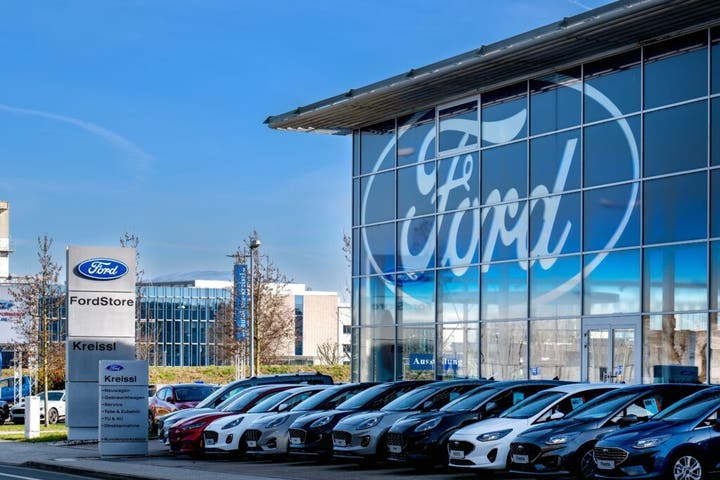
Turns out, a $17-an-hour paycheck doesn't go as far as it used to—especially if you're young, exhausted, and juggling two jobs just to survive.
Ford (NYSE:F) CEO Jim Farley heard this loud and clear from his own factory floors. And instead of shrugging it off or blaming "kids these days," he made a move that echoed the bold playbook of Henry Ford himself—one that he says America desperately needs more of.
In a June interview at the Aspen Ideas Festival with Walter Isaacson—the renowned biographer best known for his books on Steve Jobs, Leonardo da Vinci, and Elon Musk—Farley peeled back the curtain on what younger workers were really telling him about life on a $17 wage.
Don't Miss:
- 7,000+ investors have joined Timeplast's mission to eliminate microplastics—now it's your turn to invest in the future of sustainable plastic before time runs out.
- $100k+ in investable assets? Match with a fiduciary advisor for free to learn how you can maximize your retirement and save on taxes – no cost, no obligation.
"The older workers who'd been at the company said, ‘None of the young people want to work here. Jim, you pay $17 an hour, and they are so stressed,'" Farley recalled. "They've got to work at Amazon for eight hours, then they come over to Ford for seven hours, and then they sleep for three or four hours—and then they go back. And they're barely getting by."
Rather than issue a tone-deaf memo or wait for another generation to settle for less, Farley made a decisive, expensive change: he converted every temporary worker into a full-time employee.
"It wasn't easy to do," he admitted. "It was expensive. But I think that's the kind of changes we need to make in our country."
Farley's move isn't just about better paychecks—it's about reviving an old-school idea that once turned Ford into a powerhouse: when you pay workers well, they can afford the products they help build.
Trending: ‘Scrolling To UBI' — Deloitte's #1 fastest-growing software company allows users to earn money on their phones. You can invest today for just $0.30/share.
Quoting the legendary Henry Ford, Farley said, "‘I'm doing this because I want my factory worker to buy my cars. If they make enough money, they'll buy my own product.'" Then he added, "It's a self-fulfilling prophecy, in a way."
In 1914, Henry Ford famously raised factory wages to $5 a day—nearly double the going rate. It wasn't a random act of generosity. It was a smart bet that higher wages would lead to a more stable, productive workforce and—bonus—more people who could afford to drive off in a Model T. According to Farley, it worked then, and it can work now.
He also pointed to deeper structural issues. For Farley, the wage issue is just one layer of a bigger challenge: the U.S. hasn't kept up in preparing young people for careers in skilled trades.
"Our governments have to get really serious about investing in trade schools and skilled trades," Farley said. "You go to Germany—every one of our factory workers has an apprentice starting in junior high school. Every one of those jobs has a person behind it for eight years that is trained."
See Also: Accredited Investors: Grab Pre-IPO Shares of the AI Company Powering Hasbro, Sephora & MGM—Just $0.63 Before NASDAQ Launch
Farley's big bet may not please Wall Street, but it's not aimed at them.
"We decided as a company that a cooler problem than full autonomy in an urban setting was high-speed, eyes-off driving on highways—push a button, read a book," he told Isaacson, in reference to how Ford picks its battles.
When it comes to labor, he's taking that same eyes-on-the-road approach—focusing on people, not just profits. And while turning temps into full-timers might not boost short-term stock prices, Farley's betting on a longer game: one where the people building America's cars can actually afford to drive them.
Read Next: Warren Buffett once said, "If you don't find a way to make money while you sleep, you will work until you die." Here’s how you can earn passive income with just $10.
Image: Shutterstock







